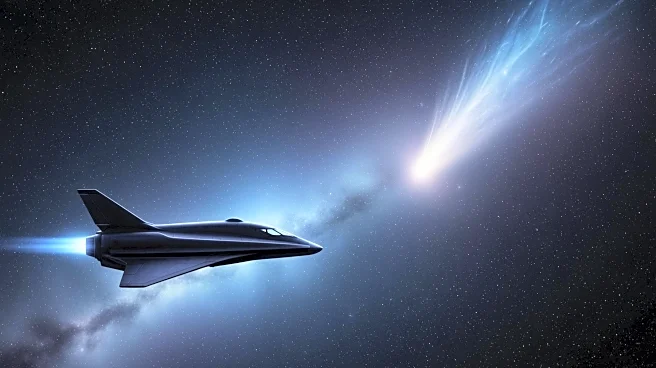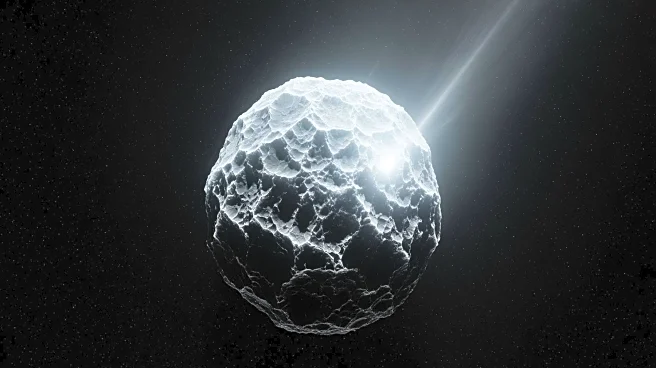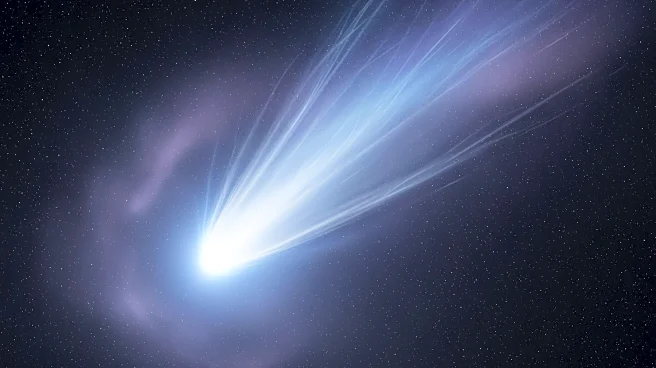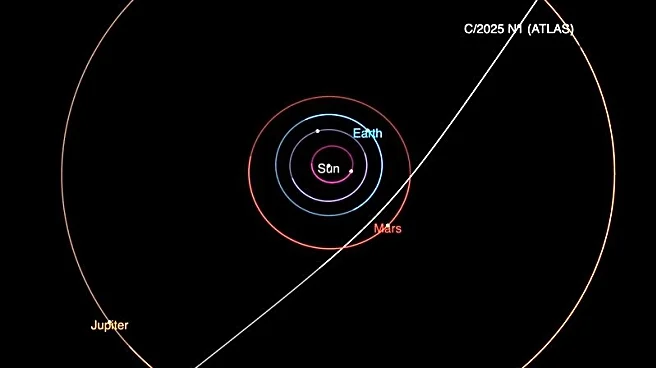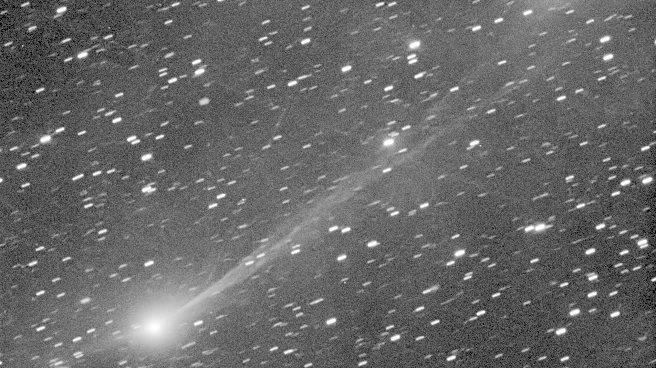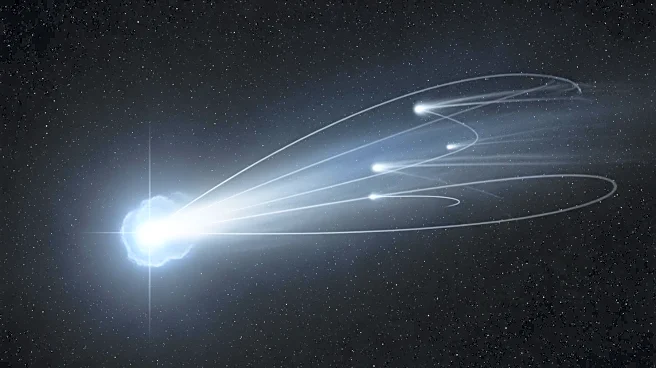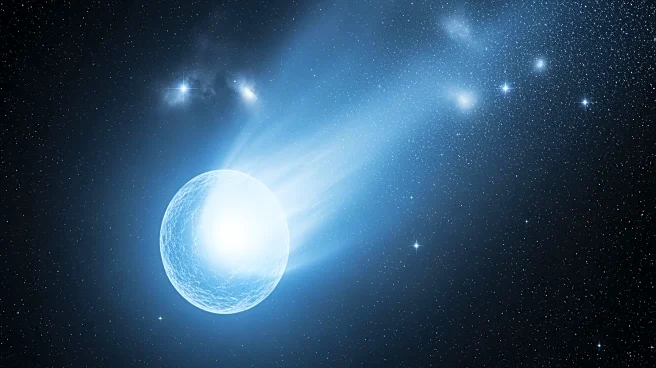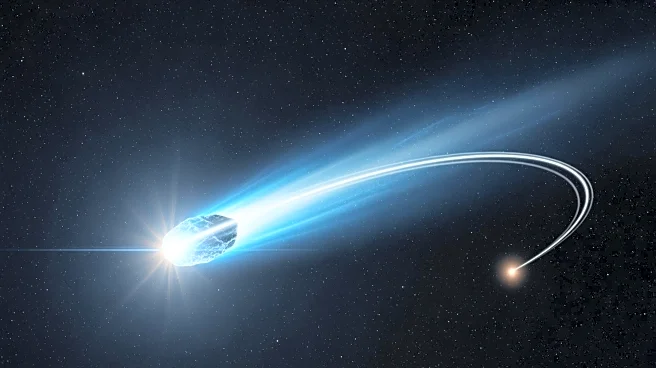What's Happening?
NASA's Mars Reconnaissance Orbiter (MRO) has captured images of the interstellar comet 3I/ATLAS using its High-Resolution Imaging Science Experiment (HiRISE) camera. The images were taken on October 2,
2025, when the comet was approximately 18.6 million miles from the spacecraft. This marks the third interstellar object discovered in our solar system. Alongside MRO, the MAVEN orbiter captured ultraviolet images, and the Perseverance rover observed the comet from the Martian surface. These observations aim to provide insights into the comet's size, chemical composition, and water vapor release as it approaches the Sun. The comet is expected to make its closest approach to Earth on December 19, 2025.
Why It's Important?
The study of interstellar objects like comet 3I/ATLAS is crucial for understanding the composition and behavior of celestial bodies that originate outside our solar system. The data collected by NASA's spacecraft can help scientists estimate the comet's size and analyze its chemical makeup, offering insights into its origins and evolution. This research contributes to the broader understanding of interstellar objects and their potential impact on our solar system. The findings may also inform future missions and the study of similar objects, enhancing our knowledge of the universe.
What's Next?
As the comet approaches its closest point to Earth in December, further observations and analyses are expected. Scientists will continue to study the data collected by MRO, MAVEN, and Perseverance to refine their understanding of the comet's characteristics. The ongoing research may lead to new discoveries about interstellar objects and their interactions with solar system bodies. NASA's continued monitoring and analysis will provide valuable information for future space exploration missions.
